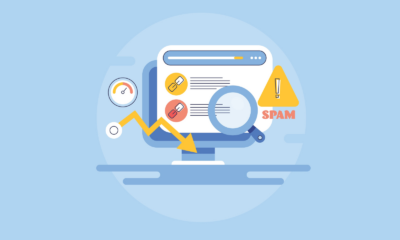SEO
Google’s AI Overviews Go Viral, Draw Mainstream Media Scrutiny
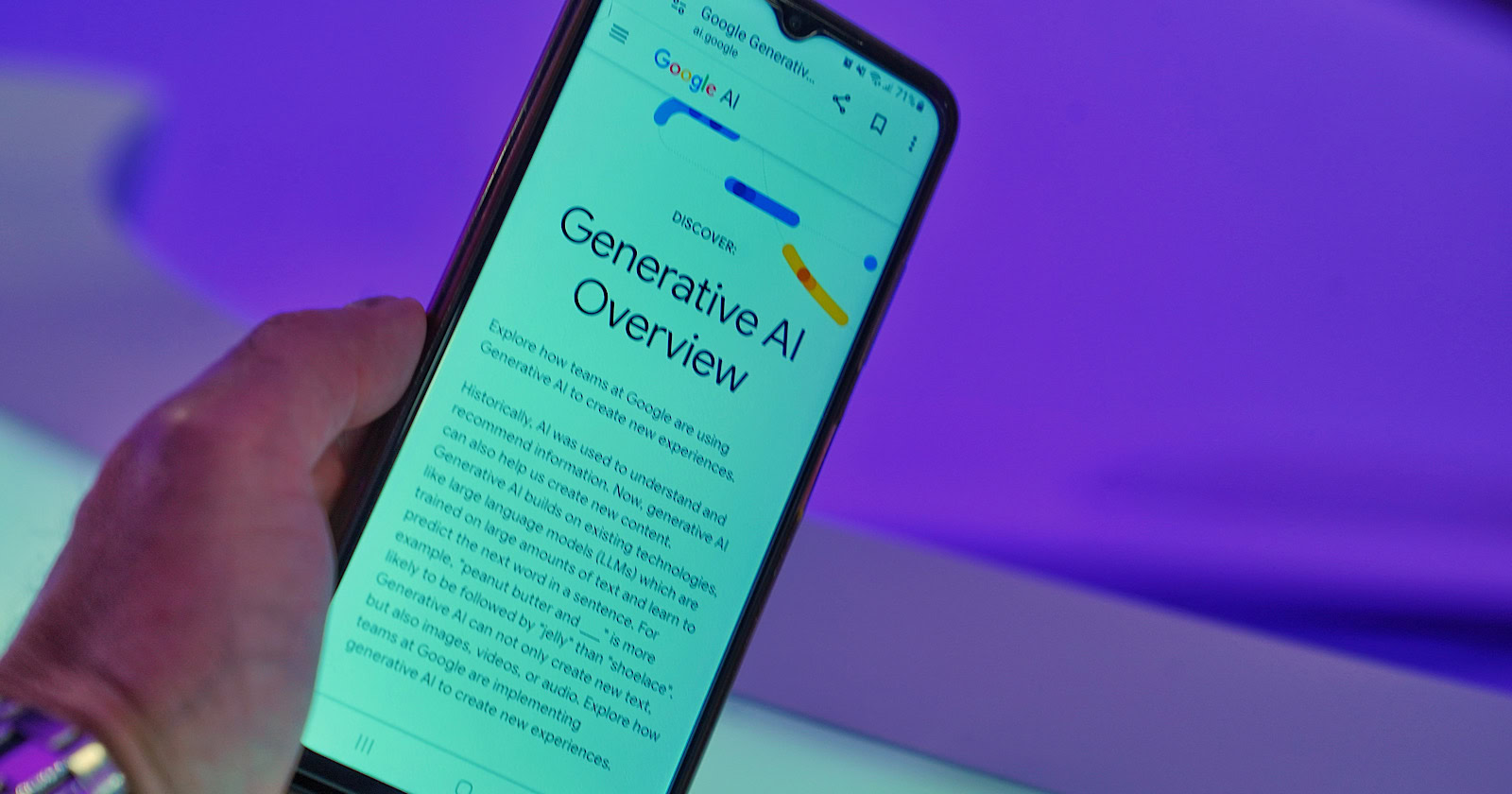
Google’s rollout of AI-generated overviews in US search results is taking a disastrous turn, with mainstream media outlets like The New York Times, BBC, and CNBC reporting on numerous inaccuracies and bizarre responses.
On social media, users are sharing endless examples of the feature’s nonsensical and sometimes dangerous output.
From recommending non-toxic glue on pizza to suggesting that eating rocks provides nutritional benefits, the blunders would be amusing if they weren’t so alarming.
Replicated….
But I appreciate that the glue suggested is “non-toxic”!
Look, this isn’t about “gotchas”, this is about pointing out clearly foreseeable harms. Before–eg–a child dies from this mess.
This isn’t about Google, it’s about the foreseeable effect of AI on society. https://t.co/kG0xP2if7L pic.twitter.com/MIPjF8hg0i— MMitchell (@mmitchell_ai) May 23, 2024
I couldn’t believe it before I tried it. Google needs to fix this asap.. pic.twitter.com/r3FyOfxiTK
— Kris Kashtanova (@icreatelife) May 23, 2024
Mainstream Media Coverage
As reported by The New York Times, Google’s AI overviews struggle with basic facts, claiming that Barack Obama was the first Muslim president of the United States and stating that Andrew Jackson graduated from college in 2005.
These errors undermine trust in Google’s search engine, which more than two billion people rely on for authoritative information worldwide.
Manual Removal & System Refinements
As reported by The Verge, Google is now scrambling to remove the bizarre AI-generated responses and improve its systems manually.
A Google spokesperson confirmed that the company is taking “swift action” to remove problematic responses and using the examples to refine its AI overview feature.
Google’s Rush To AI Integration
The flawed rollout of AI overviews isn’t an isolated incident for Google.
As CNBC notes in its report, Google made several missteps in a rush to integrate AI into its products.
In February, Google was forced to pause its Gemini chatbot after it generated inaccurate images of historical figures and refused to depict white people in most instances.
Before that, the company’s Bard chatbot faced ridicule for sharing incorrect information about outer space, leading to a $100 billion drop in Google’s market value.
Despite these setbacks, industry experts cited by The New York Times suggest that Google has little choice but to continue advancing AI integration to remain competitive.
However, the challenges of taming large language models, which ingest false information and satirical posts, are now more apparent.
The Debate Over AI In Search
The controversy surrounding AI overviews adds fuel to the debate over the risks and limitations of AI.
While the technology holds potential, these missteps remind everyone that more testing is needed before unleashing it on the public.
The BBC notes that Google’s rivals face similar backlash over their attempts to cram more AI tools into their consumer-facing products.
The UK’s data watchdog is investigating Microsoft after it announced a feature that would take continuous screenshots of users’ online activity.
At the same time, actress Scarlett Johansson criticized OpenAI for using a voice likened to her own without permission.
What This Means For Websites & SEO Professionals
Mainstream media coverage of Google’s erroneous AI overviews brings the issue of declining search quality to public attention.
As the company works to address inaccuracies, the incident serves as a cautionary tale for the entire industry.
Important takeaway: Prioritize responsible use of AI technology to ensure the benefits outweigh its risks.
SEO
Barriers To Audience Buy-In
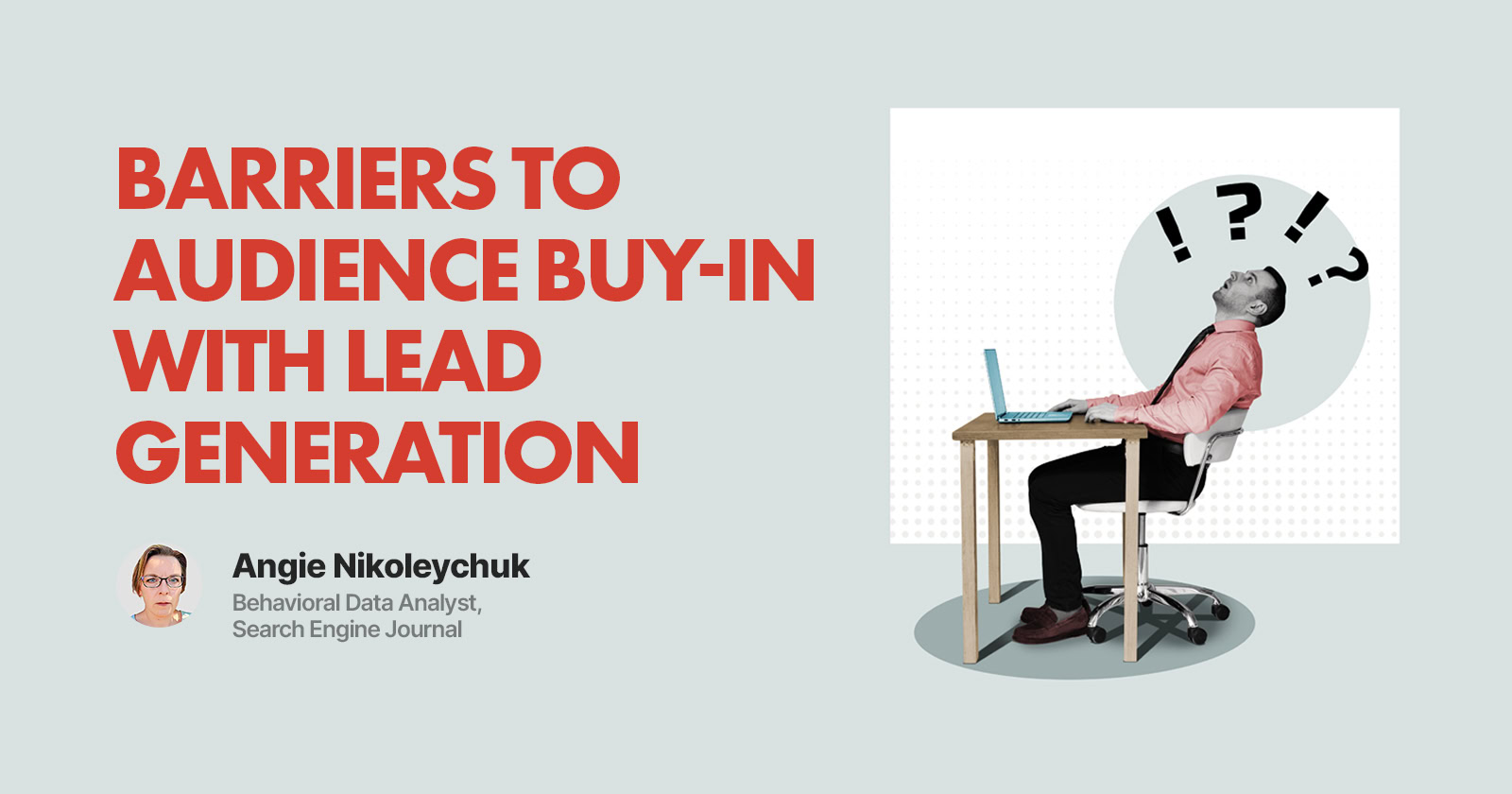
This is an excerpt from the B2B Lead Generation ebook, which draws on SEJ’s internal expertise in delivering leads across multiple media types.
People are driven by a mix of desires, wants, needs, experiences, and external pressures.
It can take time to get it right and convince a person to become a lead, let alone a paying customer.
Here are some nuances of logic and psychology that could be impacting your ability to connect with audiences and build strong leads.
1. Poor Negotiations & The Endowment Effect
Every potential customer you encounter values their own effort and information. And due to something called the endowment effect, they value that time and data much more than you do.
In contrast, the same psychological effect means you value what you offer in exchange for peoples’ information more than they will.
If the value of what you’re offering fails to match the value of what consumers are giving you in exchange (read: their time and information), the conversions will be weak.
The solution? You can increase the perceived value of the thing you’re offering, or reduce the value of what the user “pays” for the thing you offer.
Humans evaluate rewards in multiple dimensions, including the reward amount, the time until the reward is received, and the certainty of the reward.
The more time before a reward occurs, and the less certain its ultimate value, the harder you have to work to get someone to engage.
Offering value upfront – even if you’re presenting something else soon after, like a live event, ebook, or demo – can help entice immediate action as well as convince leads of the long-term value of their investment.
It can even act as a prime for the next step in the lead gen nurturing process, hinting at even more value to come and increasing the effectiveness of the rest of your lead generation strategy.
It’s another reason why inbound content is a critical support for lead generation content. The short-term rewards of highly useful ungated content help prepare audiences for longer-term benefits offered down the line.
3. Abandonment & The Funnel Myth
Every lead generation journey is carefully planned, but if you designed it with a funnel in mind, you could be losing many qualified leads.
That’s because the imagery of a funnel might suggest that all leads engage with your brand or offer in the same way, but this simply isn’t true – particularly for products or services with high values.
Instead, these journeys are more abstract. Leads tend to move back and forth between stages depending on their circumstances. They might change their minds, encounter organizational roadblocks, switch channels, or their needs might suddenly change.
Instead of limiting journeys to audience segments, consider optimizing for paths and situations, too.
Optimizing for specific situations and encounters creates multiple opportunities to capture a lead while they’re in certain mindsets. Every opportunity is a way to engage with varying “costs” for time and data, and align your key performance indicators (KPIs) to match.
Situational journeys also create unique opportunities to learn about the various audience segments, including what they’re most interested in, which offers to grab their attention, and which aspects of your brand, product, or service they’re most concerned about.
4. Under-Pricing
Free trials and discounts can be eye-catching, but they don’t always work to your benefit.
Brands often think consumers will always choose the product with the lowest possible price. That isn’t always the case.
Consumers work within something referred to as the “zone of acceptability,” which is the price range they feel is acceptable for a purchasing decision.
If your brand falls outside that range, you’ll likely get the leads – but they could fail to buy in later. The initial offer might be attractive, but the lower perception of value could work against you when it comes time to try and close the sale.
Several elements play into whether consumers are sensitive to pricing discounts. The overall cost of a purchase matters, for example.
Higher-priced purchases, such as SaaS or real estate, can be extremely sensitive to pricing discounts. They can lead to your audience perceiving the product as lower-value, or make it seem like you’re struggling. A price-quality relationship is easy to see in many places in our lives. If you select the absolute lowest price for an airline ticket, do you expect your journey to be timely and comfortable?
It’s difficult to offer specific advice on these points. To find ideal price points and discounts, you need good feedback systems from both customers and leads – and you need data about how other audiences interact. But there’s value in not being the cheapest option.
5. Lead Roles & Information
In every large purchasing decision, there are multiple roles in the process. These include:
- User: The person who ultimately uses the product or service.
- Buyer: The person who makes the purchase, but may or may not know anything about the actual product or service being purchased.
- Decider: The person who determines whether to make the purchase.
- Influencer: The person who provides opinions and thoughts on the product or service, and influences perceptions of it.
- Gatekeeper: The person who gathers and holds information about the product or service.
Sometimes, different people play these roles, and other times, one person may hold more than one of these roles. However, the needs of each role must be met at the right time. If you fail to meet their needs, you’ll see your conversions turn cold at a higher rate early in the process.
The only way to avoid this complication is to understand who it is you’re attracting when you capture the lead, and make the right information available at the right time during the conversion process.
6. Understand Why People Don’t Sign Up
Many businesses put significant effort into lead nurturing and understanding the qualities of potential customers who fill out lead forms.
But what about the ones who don’t fill out those forms?
Understanding these values and the traits that drive purchasing decisions is paramount.
Your own proprietary and customer data, like your analytics, client data, and lead interactions, makes an excellent starting place, but don’t make the mistake of basing your decisions solely on the data you have collected about the leads you have.
This information creates a picture based solely on people already interacting with you. It doesn’t include information about the audience you’ve failed to capture so far.
Don’t fall for survivorship bias, which occurs when you only look at data from people who have passed your selection filters.
This is especially critical for lead generation because there are groups of people you don’t want to become leads. But you need to make sure you’re attracting as many ideal leads as possible while filtering out those that are suboptimal. You need information about the people who aren’t converting to ensure your filters are working as intended.
Gather information from the segment of your target audience that uses a competitor’s products, and pair them with psychographic tools and frameworks like “values and lifestyle surveys” (VALS) to gather insights and inform decisions.
In a digital world of tough competition and even more demands on every dollar, your lead generation needs to be precise.
Understanding what drives your target audience before you capture the lead and ensuring every detail is crafted with the final conversion in mind will help you capture more leads and sales, and leave your brand the clear market winner.
More resources:
Featured Image: Pasuwan/Shutterstock
SEO
Google Answers Question About Toxic Link Sabotage

Google’s Gary Illyes answered a question about how to notify Google that someone is poisoning their backlink profile with “toxic links” which is a problem that many people have been talking about for at least fifteen years.
Question About Alerting Google To Toxic Links
Gary narrated the question:
“Someone’s asking, how to alert Google of sabotage via toxic links?”
And this is Gary’s answer:
I know what I would do: I’d ignore those links.
Generally Google is really, REALLY good at ignoring links that are irrelevant to the site they’re pointing at. If you feel like it, you can always disavow those “toxic” links, or file a spam report.
Disavow Links If You Feel Like It
Gary linked to Google’s explainer about disavowing links where it’s explained that the disavow tool is for a site owner to tell Google about links that they are responsible for in some way, like paid links or some other link scheme.
This is what it advises:
“If you have a manual action against your site for unnatural links to your site, or if you think you’re about to get such a manual action (because of paid links or other link schemes that violate our quality guidelines), you should try to remove the links from the other site to your site. If you can’t remove those links yourself, or get them removed, then you should disavow the URLs of the questionable pages or domains that link to your website.”
Google suggests that a link disavow is only necessary when two conditions are met:
- “You have a considerable number of spammy, artificial, or low-quality links pointing to your site,
AND- The links have caused a manual action, or likely will cause a manual action, on your site.”
Both of the above conditions must be met in order to file a valid link disavow tool.
Origin Of The Phrase Toxic Links
As Google became better at penalizing sites for low quality links and paid links, some in the highly competitive gambling industry started creating low quality links to sabotage their competitors. The practice was called negative SEO.
The phrase toxic link is something that was never heard of until after the Penguin link updates in 2012 which required penalized sites to remove all the paid and low quality links they created and then disavow the rest. An industry grew around disavowing links and it was that industry that invented the phrase Toxic Links for use in their marketing.
Confirmation That Google Is Able To Ignore Links
I have shared this anecdote before and I’ll share it here again. Someone I knew contacted me and said that their site lost rankings from negative SEO links. I took a look and their site had a ton of really nasty looking links. So out of curiosity (and because I knew that the site was this person’s main income), I emailed someone at Google Mountain View headquarters about it. That person checked it and replied that the site didn’t lose rankings because of the links. They lost rankings because of a Panda update related content issue.
That was around 2012 and it showed me how good Google was at ignoring links. Now, if Google was that good at ignoring really bad links back then, they’re probably better at it now, twelve years later now that they have the spam brain AI.
Listen to the question and answer at the 8:22 minute mark:
Featured Image by Shutterstock/New Africa
SEO
How To Build A Diverse & Healthy Link Profile
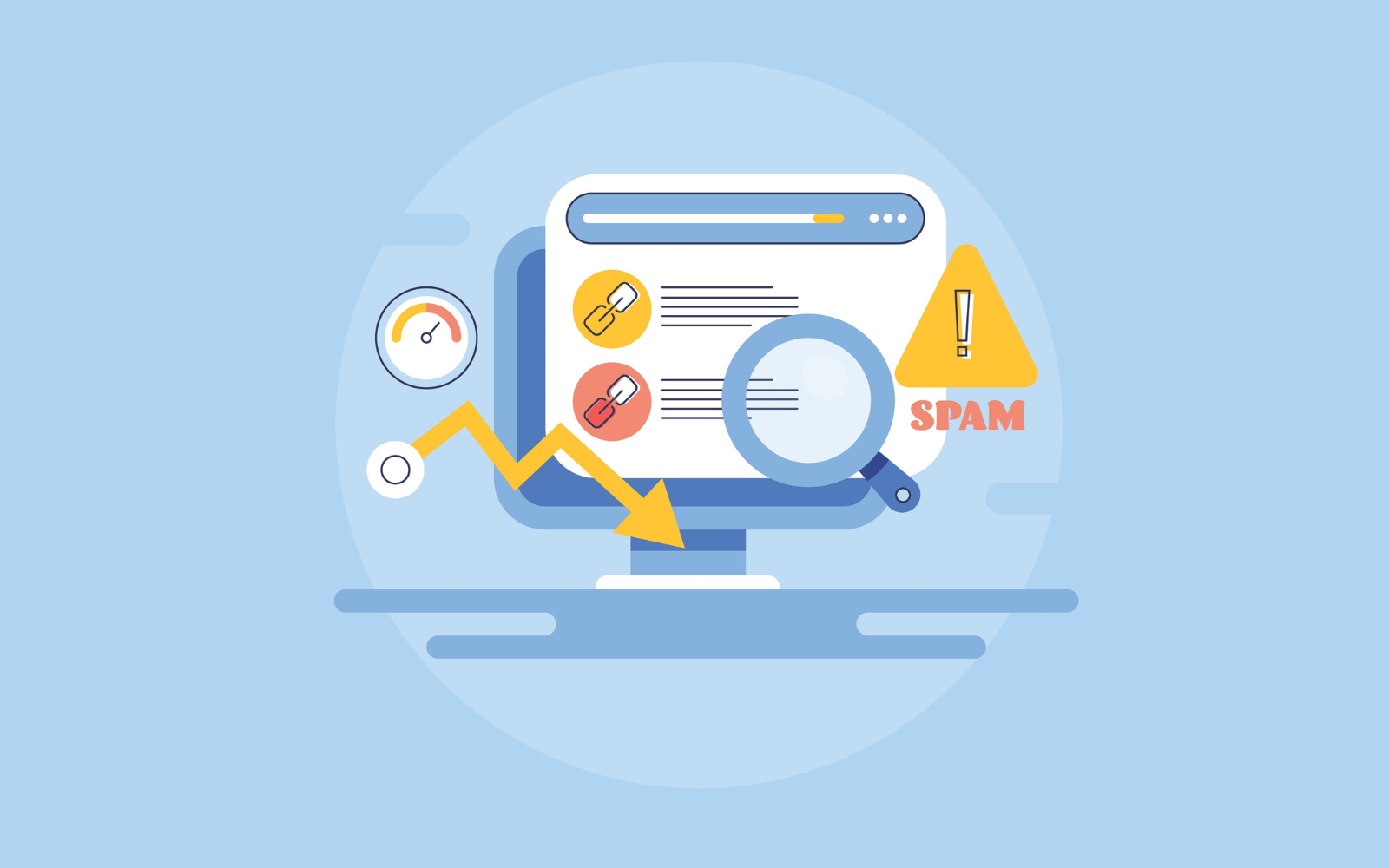
Search is evolving at an incredible pace and new features, formats, and even new search engines are popping up within the space.
Google’s algorithm still prioritizes backlinks when ranking websites. If you want your website to be visible in search results, you must account for backlinks and your backlink profile.
A healthy backlink profile requires a diverse backlink profile.
In this guide, we’ll examine how to build and maintain a diverse backlink profile that powers your website’s search performance.
What Does A Healthy Backlink Profile Look Like?
As Google states in its guidelines, it primarily crawls pages through links from other pages linked to your pages, acquired through promotion and naturally over time.
In practice, a healthy backlink profile can be divided into three main areas: the distribution of link types, the mix of anchor text, and the ratio of followed to nofollowed links.
Let’s look at these areas and how they should look within a healthy backlink profile.
Distribution Of Link Types
One aspect of your backlink profile that needs to be diversified is link types.
It looks unnatural to Google to have predominantly one kind of link in your profile, and it also indicates that you’re not diversifying your content strategy enough.
Some of the various link types you should see in your backlink profile include:
- Anchor text links.
- Image links.
- Redirect links.
- Canonical links.
Here is an example of the breakdown of link types at my company, Whatfix (via Semrush):
Most links should be anchor text links and image links, as these are the most common ways to link on the web, but you should see some of the other types of links as they are picked up naturally over time.
Mix Of Anchor Text
Next, ensure your backlink profile has an appropriate anchor text variance.
Again, if you overoptimize for a specific type of anchor text, it will appear suspicious to search engines like Google and could have negative repercussions.
Here are the various types of anchor text you might find in your backlink profile:
- Branded anchor text – Anchor text that is your brand name or includes your brand name.
- Empty – Links that have no anchor text.
- Naked URLs – Anchor text that is a URL (e.g., www.website.com).
- Exact match keyword-rich anchor text – Anchor text that exactly matches the keyword the linked page targets (e.g., blue shoes).
- Partial match keyword-rich anchor text – Anchor text that partially or closely matches the keyword the linked page targets (e.g., “comfortable blue footwear options”).
- Generic anchor text – Anchor text such as “this website” or “here.”
To maintain a healthy backlink profile, aim for a mix of anchor text within a similar range to this:
- Branded anchor text – 35-40%.
- Partial match keyword-rich anchor text – 15-20%.
- Generic anchor text -10-15%.
- Exact match keyword-rich anchor text – 5-10%.
- Naked URLs – 5-10%.
- Empty – 3-5%.
This distribution of anchor text represents a natural mix of differing anchor texts. It is common for the majority of anchors to be branded or partially branded because most sites that link to your site will default to your brand name when linking. It also makes sense that the following most common anchors would be partial-match keywords or generic anchor text because these are natural choices within the context of a web page.
Exact-match anchor text is rare because it only happens when you are the best resource for a specific term, and the site owner knows your page exists.
Ratio Of Followed Vs. Nofollowed Backlinks
Lastly, you should monitor the ratio of followed vs. nofollowed links pointing to your website.
If you need a refresher on what nofollowed backlinks are or why someone might apply the nofollow tag to a link pointing to your site, check out Google’s guide on how to qualify outbound links to Google.
Nofollow attributes should only be applied to paid links or links pointing to a site the linking site doesn’t trust.
While it is not uncommon or suspicious to have some nofollow links (people misunderstand the purpose of the nofollow attribute all the time), a healthy backlink profile will have far more followed links.
You should aim for a ratio of 80%:20% or 70%:30% in favor of followed links. For example, here is what the followed vs. nofollowed ratio looks like for my company’s backlink profile (according to Ahrefs):
 Screenshot from Ahrefs, May 2024
Screenshot from Ahrefs, May 2024You may see links with other rel attributes, such as UGC or Sponsored.
The “UGC” attribute tags links from user-generated content, while the “Sponsored” attribute tags links from sponsored or paid sources. These attributes are slightly different than the nofollow tag, but they essentially work the same way, letting Google know these links aren’t trusted or endorsed by the linking site. You can simply group these links in with nofollowed links when calculating your ratio.
Importance Of Diversifying Your Backlink Profile
So why is it important to diversify your backlink profile anyway? Well, there are three main reasons you should consider:
- Avoiding overoptimization.
- Diversifying traffic sources.
- And finding new audiences.
Let’s dive into each of these.
Avoiding Overoptimization
First and foremost, diversifying your backlink profile is the best way to protect yourself from overoptimization and the damaging penalties that can come with it.
As SEO pros, our job is to optimize websites to improve performance, but overoptimizing in any facet of our strategy – backlinks, keywords, structure, etc. – can result in penalties that limit visibility within search results.
In the previous section, we covered the elements of a healthy backlink profile. If you stray too far from that model, your site might look suspicious to search engines like Google and you could be handed a manual or algorithmic penalty, suppressing your rankings in search.
Considering how regularly Google updates its search algorithm these days (and how little information surrounds those updates), you could see your performance tank and have no idea why.
This is why it’s so important to keep a watchful eye on your backlink profile and how it’s shaping up.
Diversifying Traffic Sources
Another reason to cultivate a diverse backlink profile is to ensure you’re diversifying your traffic sources.
Google penalties come swiftly and can often be a surprise. If you have all your eggs in that basket when it comes to traffic, your site will suffer badly and might need help to recover.
However, diversifying your traffic sources (search, social, email, etc.) will mitigate risk – similar to a stock portfolio – as you’ll have other traffic sources to provide a steady flow of visitors if another source suddenly dips.
Part of building a diverse backlink profile is acquiring a diverse set of backlinks and backlink types, and this strategy will also help you find differing and varied sources of traffic.
Finding New Audiences
Finally, building a diverse backlink profile is essential, as doing so will also help you discover new audiences.
If you acquire links from the same handful of websites and platforms, you will need help expanding your audience and building awareness for your website.
While it’s important to acquire links from sites that cater to your existing audience, you should also explore ways to build links that can tap into new audiences. The best way to do this is by casting a wide net with various link acquisition tactics and strategies.
A diverse backlink profile indicates a varied approach to SEO and marketing that will help bring new visitors and awareness to your site.
Building A Diverse Backlink Profile
So that you know what a healthy backlink profile looks like and why it’s important to diversify, how do you build diversity into your site’s backlink profile?
This comes down to your link acquisition strategy and the types of backlinks you actively pursue. To guide your strategy, let’s break link building into three main categories:
- Foundational links.
- Content promotion.
- Community involvement.
Here’s how to approach each area.
Foundational Links
Foundational links represent those links that your website simply should have. These are opportunities where a backlink would exist if all sites were known to all site owners.
Some examples of foundational links include:
- Mentions – Websites that mention your brand in some way (brand name, product, employees, proprietary data, etc.) on their website but don’t link.
- Partners – Websites that belong to real-world partners or companies you connect with offline and should also connect (link) with online.
- Associations or groups – Websites for offline associations or groups you belong to where your site should be listed with a link.
- Sponsorships – Any events or organizations your company sponsors might have websites that could (and should) link to your site.
- Sites that link to competitors – If a website is linking to a competitor, there is a strong chance it would make sense for them to link to your site as well.
These link opportunities should set the foundation for your link acquisition efforts.
As the baseline for your link building strategy, you should start by exhausting these opportunities first to ensure you’re not missing highly relevant links to bolster your backlink profile.
Content Promotion
Next, consider content promotion as a strategy for building a healthy, diverse backlink profile.
Content promotion is much more proactive than the foundational link acquisition mentioned above. You must manifest the opportunity by creating link-worthy content rather than simply capitalizing on an existing opportunity.
Some examples of content promotion for links are:
- Digital PR – Digital PR campaigns have numerous benefits and goals beyond link acquisition, but backlinks should be a primary KPI.
- Original research – Similar to digital PR, original research should focus on providing valuable data to your audience. Still, you should also make sure any citations or references to your research are correctly linked.
- Guest content – Whether regular columns or one-off contributions, providing guest content to websites is still a viable link acquisition strategy – when done right. The best way to gauge your guest content strategy is to ask yourself if you would still write the content for a site without guaranteeing a backlink, knowing you’ll still build authority and get your message in front of a new audience.
- Original imagery – Along with research and data, if your company creates original imagery that offers unique value, you should promote those images and ask for citation links.
Content promotion is a viable avenue for building a healthy backlink profile as long as the content you’re promoting is worthy of links.
Community Involvement
Community involvement is the final piece of your link acquisition puzzle when building a diverse backlink profile.
After pursuing all foundational opportunities and manually promoting your content, you should ensure your brand is active and represented in all the spaces and communities where your audience engages.
In terms of backlinks, this could mean:
- Wikipedia links – Wikipedia gets over 4 billion monthly visits, so backlinks here can bring significant referral traffic to your site. However, acquiring these links is difficult as these pages are moderated closely, and your site will only be linked if it is legitimately a top resource on the web.
- Forums (Reddit, Quora, etc.) – Another great place to get backlinks that drive referral traffic is forums like Reddit and Quora. Again, these forums are strictly moderated, and earning link placements on these sites requires a page that delivers significant and unique value to a specific audience.
- Social platforms – Social media platforms and groups represent communities where your brand should be active and engaged. While these strategies are likely handled by other teams outside SEO and focus on different metrics, you should still be intentional about converting these interactions into links when or where possible.
- Offline events – While it may seem counterintuitive to think of offline events as a potential source for link acquisition, legitimate link opportunities exist here. After all, most businesses, brands, and people you interact with at these events also have websites, and networking can easily translate to online connections in the form of links.
While most of the link opportunities listed above will have the nofollow link attribute due to the nature of the sites associated with them, they are still valuable additions to your backlink profile as these are powerful, trusted domains.
These links help diversify your traffic sources by bringing substantial referral traffic, and that traffic is highly qualified as these communities share your audience.
How To Avoid Developing A Toxic Backlink Profile
Now that you’re familiar with the link building strategies that can help you cultivate a healthy, diverse backlink profile, let’s discuss what you should avoid.
As mentioned before, if you overoptimize one strategy or link, it can seem suspicious to search engines and cause your site to receive a penalty. So, how do you avoid filling your backlink profile with toxic links?
Remember The “Golden Rule” Of Link Building
One simple way to guide your link acquisition strategy and avoid running afoul of search engines like Google is to follow one “golden rule.”
That rule is to ask yourself: If search engines like Google didn’t exist, and the only way people could navigate the web was through backlinks, would you want your site to have a link on the prospective website?
Thinking this way strips away all the tactical, SEO-focused portions of the equation and only leaves the human elements of linking where two sites are linked because it makes sense and makes the web easier to navigate.
Avoid Private Blog Networks (PBNs)
Another good rule is to avoid looping your site into private blog networks (PBNs). Of course, it’s not always obvious or easy to spot a PBN.
However, there are some common traits or red flags you can look for, such as:
- The person offering you a link placement mentions they have a list of domains they can share.
- The prospective linking site has little to no traffic and doesn’t appear to have human engagement (blog comments, social media followers, blog views, etc.).
- The website features thin content and little investment into user experience (UX) and design.
- The website covers generic topics and categories, catering to any and all audiences.
- Pages on the site feature numerous external links but only some internal links.
- The prospective domain’s backlink profile features overoptimization in any of the previously discussed forms (high-density of exact match anchor text, abnormal ratio of nofollowed links, only one or two link types, etc.).
Again, diversification – in both tactics and strategies – is crucial to building a healthy backlink profile, but steering clear of obvious PBNs and remembering the ‘golden rule’ of link building will go a long way toward keeping your profile free from toxicity.
Evaluating Your Backlink Profile
As you work diligently to build and maintain a diverse, healthy backlink profile, you should also carve out time to evaluate it regularly from a more analytical perspective.
There are two main ways to evaluate the merit of your backlinks: leverage tools to analyze backlinks and compare your backlink profile to the greater competitive landscape.
Leverage Tools To Analyze Backlink Profile
There are a variety of third-party tools you can use to analyze your backlink profile.
These tools can provide helpful insights, such as the total number of backlinks and referring domains. You can use these tools to analyze your full profile, broken down by:
- Followed vs. nofollowed.
- Authority metrics (Domain Rating, Domain Authority, Authority Score, etc.).
- Backlink types.
- Location or country.
- Anchor text.
- Top-level domain types.
- And more.
You can also use these tools to track new incoming backlinks, as well as lost backlinks, to help you better understand how your backlink profile is growing.
Some of the best tools for analyzing your backlink profile are:
Many of these tools also have features that estimate how toxic or suspicious your profile might look to search engines, which can help you detect potential issues early.
Compare Your Backlink Profile To The Competitive Landscape
Lastly, you should compare your overall backlink profile to those of your competitors and those competing with your site in the search results.
Again, the previously mentioned tools can help with this analysis – as far as providing you with the raw numbers – but the key areas you should compare are:
- Total number of backlinks.
- Total number of referring domains.
- Breakdown of authority metrics of links (Domain Rating, Domain Authority, Authority Score, etc.).
- Authority metrics of competing domains.
- Link growth over the last two years.
Comparing your backlink profile to others within your competitive landscape will help you assess where your domain currently stands and provide insight into how far you must go if you’re lagging behind competitors.
It’s worth noting that it’s not as simple as whoever has the most backlinks will perform the best in search.
These numbers are typically solid indicators of how search engines gauge the authority of your competitors’ domains, and you’ll likely find a correlation between strong backlink profiles and strong search performance.
Approach Link Building With A User-First Mindset
The search landscape continues to evolve at a breakneck pace and we could see dramatic shifts in how people search within the next five years (or sooner).
However, at this time, search engines like Google still rely on backlinks as part of their ranking algorithms, and you need to cultivate a strong backlink profile to be visible in search.
Furthermore, if you follow the advice in this article as you build out your profile, you’ll acquire backlinks that benefit your site regardless of search algorithms, futureproofing your traffic sources.
Approach link acquisition like you would any other marketing endeavor – with a customer-first mindset – and over time, you’ll naturally build a healthy, diverse backlink profile.
More resources:
Featured Image: Sammby/Shutterstock
-
SEARCHENGINES7 days ago
Daily Search Forum Recap: June 10, 2024
-

 WORDPRESS5 days ago
WORDPRESS5 days agoHow to Start a Dropshipping Business and Earn $150k/yr: A Step-by-Step Guide
-

 SEO7 days ago
SEO7 days agoGoogle’s Statement About CTR And HCU
-

 WORDPRESS6 days ago
WORDPRESS6 days agoA Small Business Guide to Building An E-Commerce Website | CO
-

 SEO6 days ago
SEO6 days agoHow to Persuade Your Boss to Send You to Ahrefs Evolve
-
SEARCHENGINES5 days ago
Daily Search Forum Recap: June 12, 2024
-

 SEO4 days ago
SEO4 days agoWhy Now’s The Time To Adopt Schema Markup
-
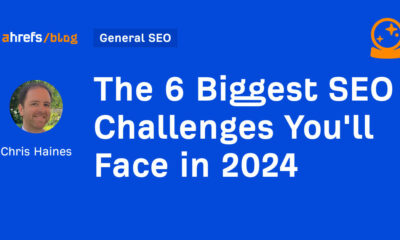
 SEO4 days ago
SEO4 days agoThe 6 Biggest SEO Challenges You’ll Face in 2024










